Scaling a gigantic volcano seems to rank fairly high on travel bucket lists for many adventurous travelers. It’s thrilling to be near something so destructive but also life-giving: the volcanic gasses released into the atmosphere eons ago helped form the current chemical balance in the ocean that helped many of Earth’s earliest living creatures survive.
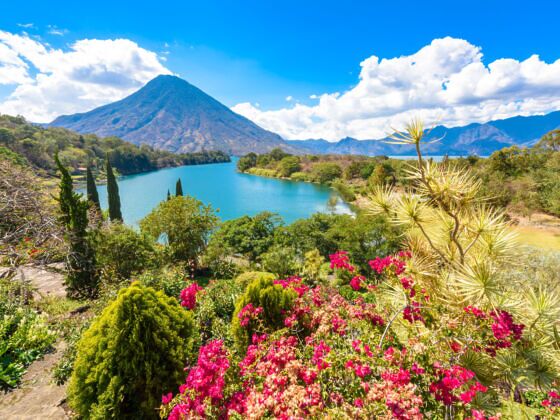

5 Guatemala Volcano Hikes for Beginners and Experts Alike
It’s hard not to feel both invincible and like you’re flirting with danger as you walk on the edge of an active volcano. It almost seems like you can feel the volcano’s energy the higher and higher you climb. If that appeals to you, whether you’ve hiked near a volcano or not, there’s one destination you’ll want to add to your bucket list: Guatemala.
Guatemala is known for its vast wild beauty, Mayan culture, incredibly fresh produce (we’re talking about those oh-so-juicy fruits and crisp vegetables), and, of course, volcanoes. The Guatemala volcano hikes below aren’t just for expert hikers, so don’t underestimate your abilities or think they’re only for experts. Guatemala’s volcano hikes offer the chance to see unique perspectives of the country’s defining geographic features whether you’re a frequent hiker or not.
Some of the Guatemala volcano hikes below are best attempted with a guide, but others are easy to do on your own, so long as you’re armed with plenty of water and snacks. Below are five of the most beautiful volcanic hiking trails in Guatemala.
- The five best Guatemala volcano hikes
- How many volcanoes are in Guatemala?
- When is the best time to visit Guatemala?
- Where to stay in Guatemala
Chicabal Volcano and Chicabal Lake
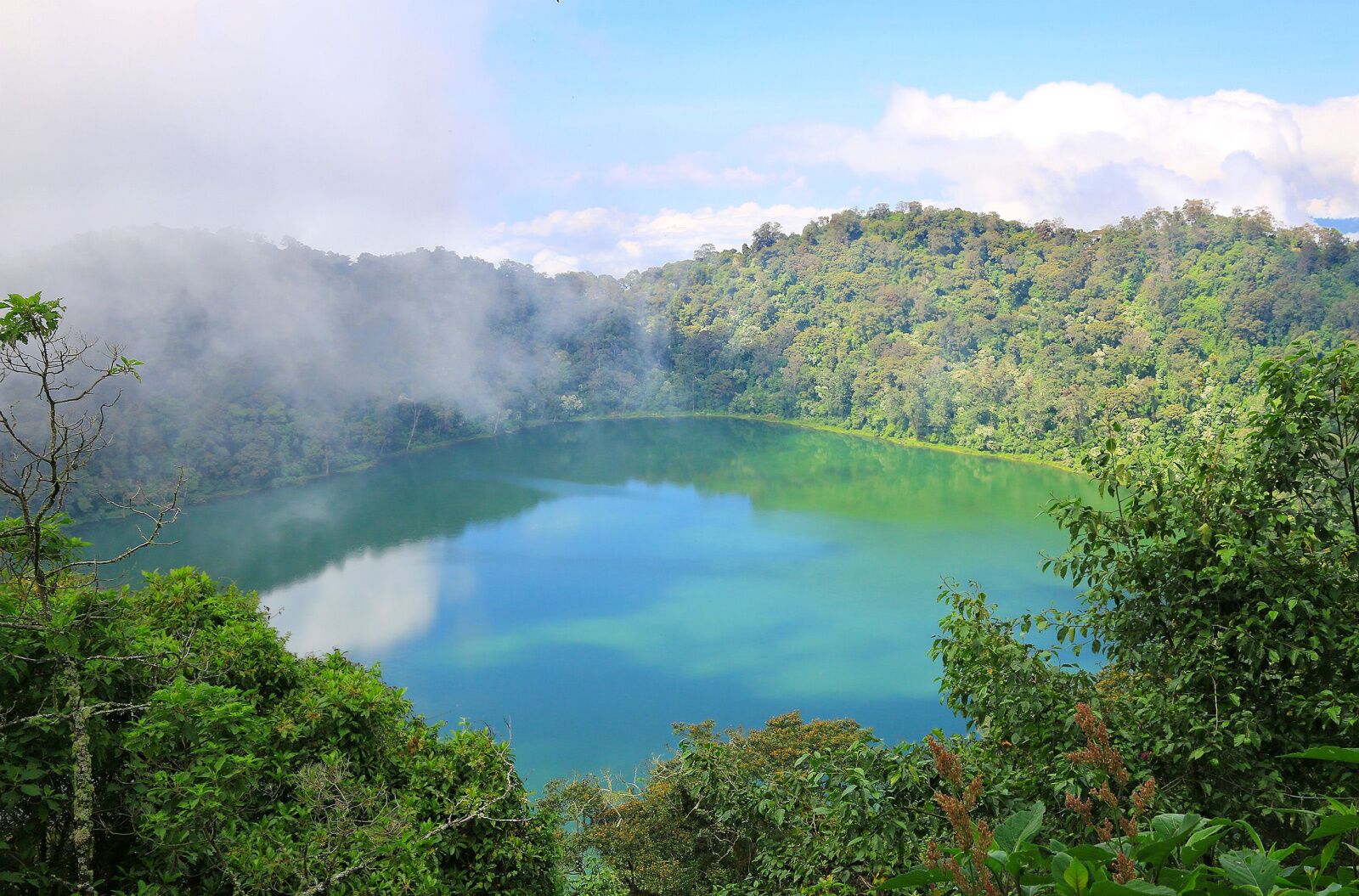
Photo: Inga Locmele/Shutterstock
- Distance: 4.7 miles
- Elevation gain: 2,120 feet
- Guide required?: No
The trailhead for the quiet Chicabal Volcano is near the city of San Martín Sacatepéquez in southwestern Guatemala’s Quetzaltenango Department. The hike is accessible year-round and offers great views of the jungle as you climb toward Chicabal Lake, formed in the extinct volcano’s caldera.
At times the trail is easy, but the plethora of stairs quickly bump the rating for this Guatemala volcano hike up to moderately difficult. Expect to gain 2,119 feet in elevation as you scale the volcano. If you need a break, keep your eyes peeled for the mirador (lookout point), which is a great stopping place to grab some coffee and snacks. And if you happen to traverse through fog, don’t shy away from continuing. Instead, embrace the slightly mystical feeling and enjoy the gorgeous views of the lake peaking through the murky moisture.
Santa María Volcano

Photo: marako85/Shutterstock
- Distance: 5 miles
- Elevation gain: 3,950 feet
- Guide required?: No
Santa María is another popular Guatemala volcano hike in Quetzaltenango. It’s in the town of Quetzaltenango (it’s both a city and municipality) and is a five-mile, out-and-back trek with a steep incline. The trail begins with a gentle ascent beneath the beautiful canopy of the forest, then gradually picks up momentum, eventually leading to a rock scramble closer to the top. Given the elevation gain. It’s safe to say it’s one of the harder Guatemala volcano hikes, but the breathtaking views from the top are a worthy reward. Sometimes you’ll even see locals holding traditional Mayan ceremonies at the top.
This route takes about five to six hours to complete, depending on your hiking experience. You can hike it by yourself, but if you prefer a guide, there are plenty of available options to choose from, like Anywhere Guatemala or Quetzal Trekkers.
Acatenango Volcano
@matadornetwork Hike up #AcatenangoVolcano in #Guatemala and you’ll have an amazing view of nearby #FuegoVolcano 🌋 🎥 @Edison Navarro378 #volcano #linkbudsneveroff ♬ mount everest sped up – xxtristanxo
- Distance: 8.5 miles
- Elevation gain: 5,300 feet
- Guide required?: No, but recommended
Acatenango is one of the towering giants that sits just outside Antigua, a city known for being surrounded by volcanoes. It may be the most popular Guatemala volcano hike among travelers as it journeys through grassy farmlands, habitats for diverse fauna and flora, cloud forests, and more. A guide isn’t required, but it’s highly recommended as the hike and unpredictable weather make it very challenging.
Acatenango can be done as a day hike or overnight trip. If you decide to make it an overnight and camp, you’ll likely want a guide unless you have all your own equipment (including a tent, sleeping pad, and headlamp). Guiding companies can usually provide any equipment you’ll need (and often help carry it, if you’re worried about the extra weight during what’s already a tough hike). Nearly every trekking company offers guided trips up Acatenango.
Pacaya Volcano
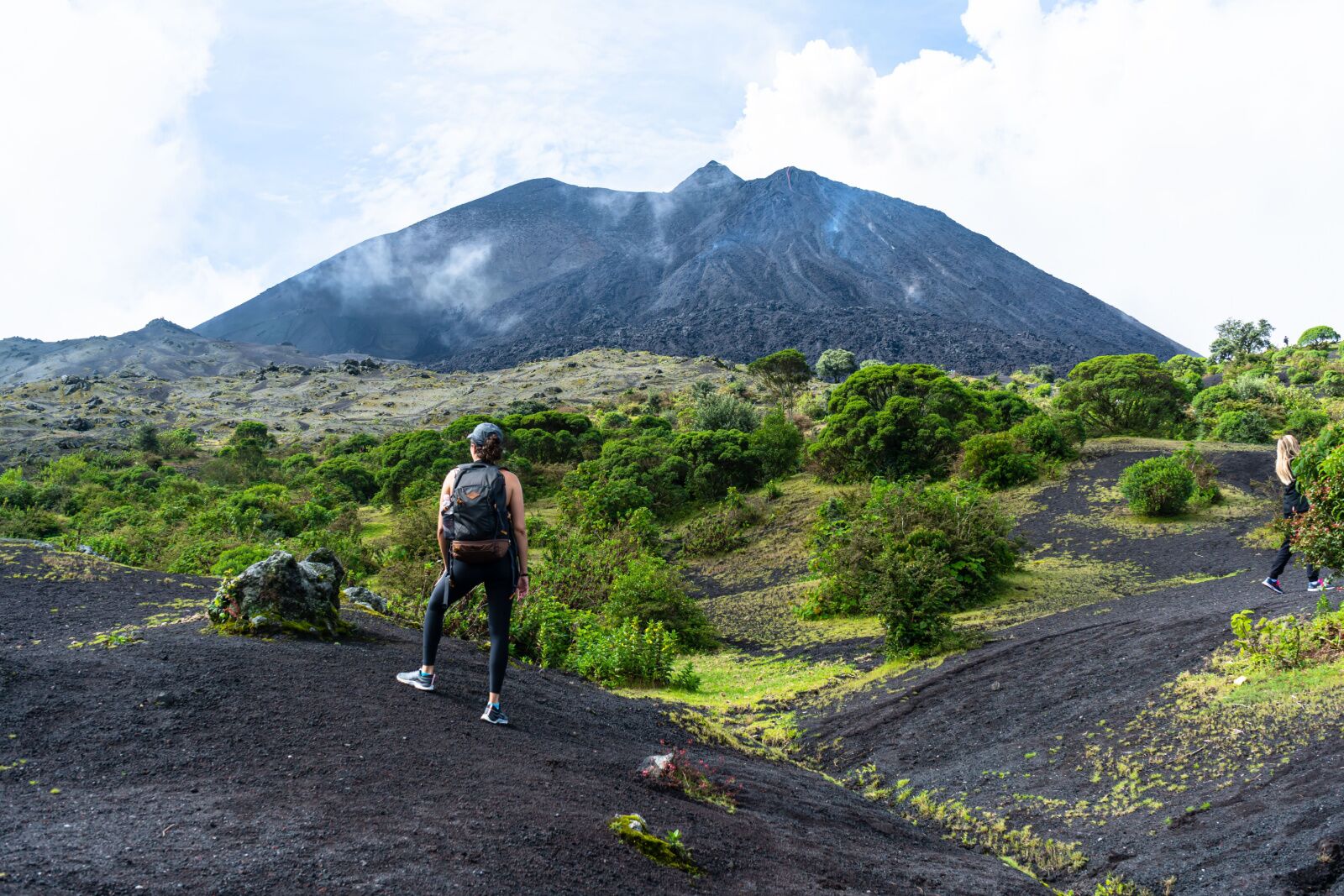
Photo: Jose de Jesus Churion Del/Shutterstock
- Distance: 3.5 miles
- Elevation gain: 1,430 feet
- Guide required?: Yes
Standing guard near the city of Escuintla is Pacaya Volcano. Aside from the impressive views from the top, one of the most exciting things about this Guatemala volcano hike is that Pacaya Volcano is still active. Partially because of that, you’ll need a guide to accompany you on the hike.
While the trail is rated as difficult, it tends to be easier than other trails like Acatenango and Fuego since it has less elevation gain, and only takes about three hours to complete. Expect to begin your hike on soft volcanic sand, followed by rocky terrain. Along the way, you’ll see hot spots of lava flows and magma fields. If you’re lucky, your guide may even roast a marshmallow or two for you during a rest stop (and some people even cook pizza over the lava).
Entering the park and hiring a guide costs 200 Quetzal, or about $25 US, payable at the entrance. There are usually snack vendors along the way, so bring some extra cash. You can also go with a guiding company that will arrange all the details for you, like Guatemalan Adventure.
Fuego Volcano
@matadornetwork #FuegoVolcano in #Guatemala is one of the most active volcanoes in Central America. For the best view you can hike up the inactive Acatenango Volcano next to it 🌋 🎥 IG @skiddinginbroadside #guatemalatraveltips #volcanoview #volcandefuego ♬ original sound – Matador Travel + Adventure
- Distance: 2.8 miles
- Elevation gain: 1,540 feet
- Guide required?: No
Fuego Volcano is another active Guatemala volcano hike near the city of San Miguel Dueñas in the department of Sacatepéquez. It shares the same base area as Acatenango Volcano but is an entirely different route. From the trailhead, it’s an out-and-back hike, which means it has a rather steep incline, gaining all the elevation in 1.4 miles. And it starts with a downhill. In other words, it’s an extremely strenuous hike.
While this Guatemala volcano hike is challenging, you can always hike only some of the way to admire the views and see the volcanic activity up close. Along the trail are dazzling wildflowers scattered throughout high-alpine meadows.
This is another route where you need to use a guide. You can take a day trip with companies like Fuego Expeditions or take an overnight hike with companies such as OX Expedition to witness the sun rising over the fiery volcano. If you’re up for it, you can even book a double hike, hiking both Fuego Volcano and Acatenango on a two-night adventure with Adventure Guatemala.
How many volcanoes are in Guatemala?
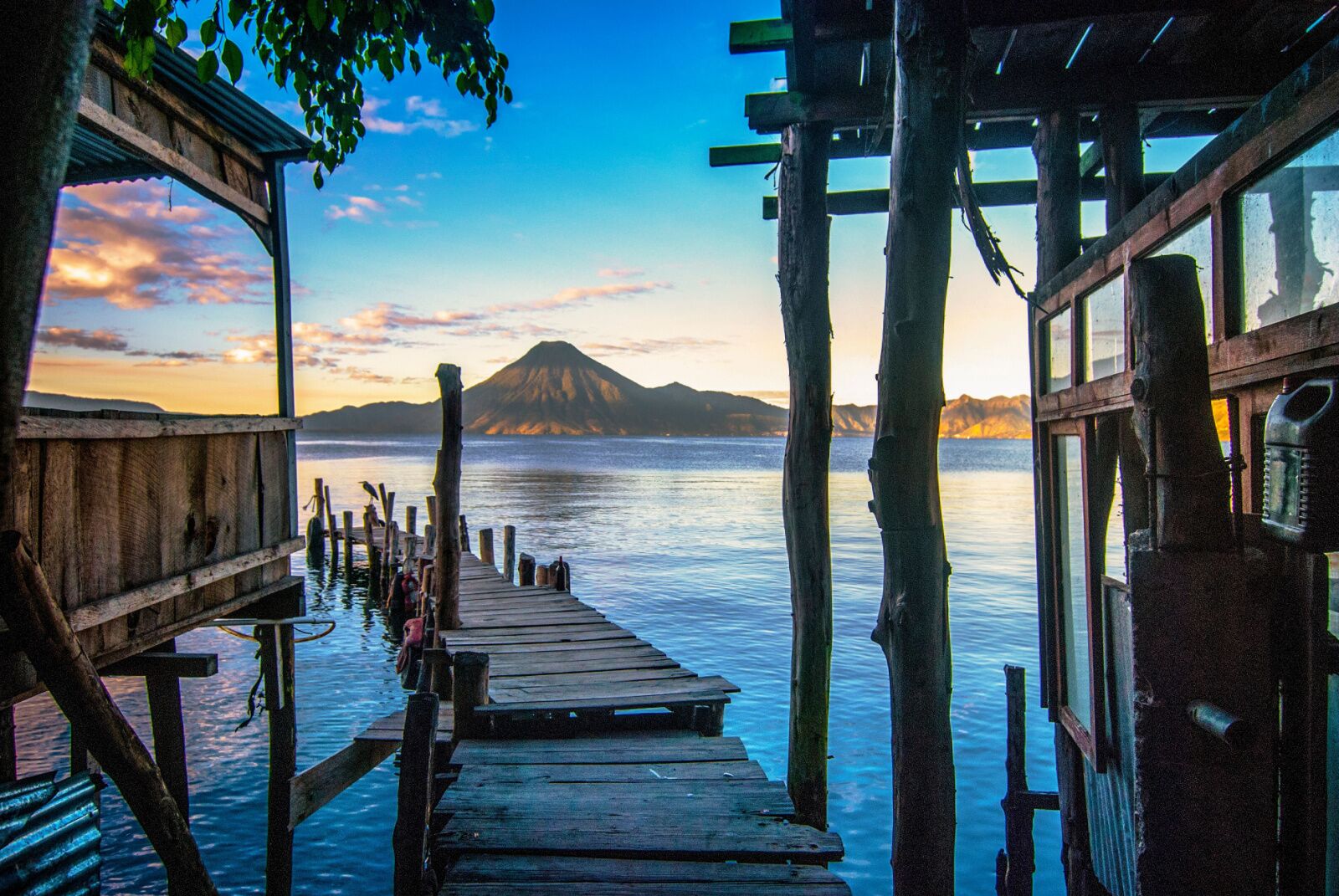
Photo: Mesa Studios/Shutterstock
You’ve likely heard it before, but there is an abundance of volcanoes in Guatemala. That’s because the country sits on the “Ring of Fire:” the term for the horseshoe-shaped outline of the Pacific tectonic plate. Along the edges, the Pacific plate rubs against other plates, like the Philippine and North American Plate. That friction and pressure create volcanoes.
Fortunately, when volcanoes erupt, the chemicals and ash nourish the surrounding soil, contributing to Guatemala’s rich agricultural scene.
Guatemala has three constantly active volcanoes: Santiaguito, Pacaya, and Fuego. But the country has 37 in total.
When is the best time to visit Guatemala?

Photo: Simon Dannhauer/Shutterstock
When it comes to the best time to visit Guatemala for a hiking trip, consider planning around the wet and dry seasons. Dry season starts around November and typically ends in early April. During that time, you can expect sunny and dry weather.
The wet season kicks off around late April or May and usually lasts until October. If you’re visiting during that time, expect rainy afternoons. However, you may experience a short break in the rain if you plan a trip sometime in July and August. These dry periods during the rainy season are called “canícula” and can be a great time to visit for outdoor enthusiasts. Keep in mind, however, that the exact time frame of canícula changes from year to year. So planning a trip during that time may work better for last-minute planners.
Where should you stay in Guatemala?
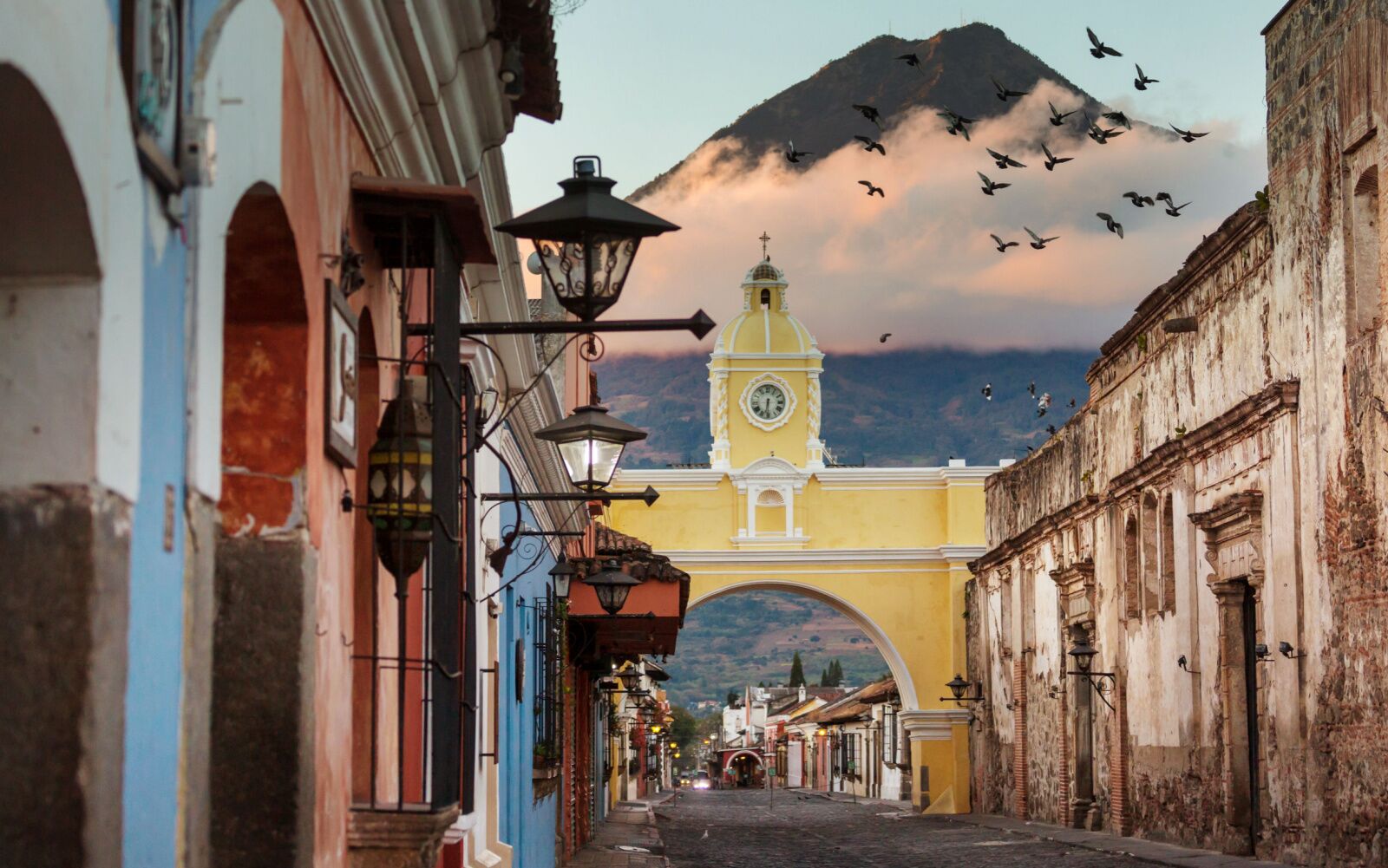
Photo: Galyna Andrushko/Shutterstock
Guatemala is filled with charming boutique hotels, beautiful eco-resorts tucked into the mountainsides, and cozy bed and breakfasts. If hiking Chicabal Volcano and Chicabal Lake is on your bucket list, Jenna’s River Bed and Breakfast offers spacious yurts with stunning views of Chicabal Volcano and tasty included breakfasts. It’s in Solola, and rates start around $97 a night.
Alternatively, if it’s your first time visiting Guatemala, Antigua is an excellent city to stay in since it’s close to three volcanoes (Fuego, Agua, and Acatenango). The historic town has several boutique hotels in the shadow of said volcanoes, including Camino Real Antigua (with an outdoor pool and super-cool stone bar room) or Meson Panza Verde, with rich and warm decor elements (and complimentary breakfast). Real Antigua starts around $139 a night, while Meson Panza is a bit more affordable, with base rates around $90.
If you’d prefer something more adventurous, check out the four-day Antigua to Lake Atitlán trek from Trek Guatemala. You’ll carry only a day pack while the porters carry the rest, the incredible guides will show you gorgeous places along the route, and you’ll sleep in comfortable safari-style tents each evening.